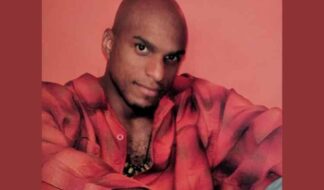By Gwendolyn Ann Smith

Clothing retailer H&M, edging into the fall fashion season, released a new television advertisement. Set to a cover of the Tom Jones's hit "She's A Lady," the ad features women of several ethnicities, ages and body types flaunting H&Ms fashions.
It's a positive, affirming message chock full of the sort of feel-good tropes I would expect from any fashion-forward retailer in 2016. Or it's "disgusting" and "confusing for children" if you are a member of the anti-LGBT hate group One Million Moms. "1MM is not sure of H&M clothing company's thought process behind their new television ad," says the group, "but if they are attempting to offend customers and families, they have succeeded."
They then list three offensive things they spotted in the ad, including two teen girls kissing, a woman wearing underwear, and, yes, a "man dressed as a woman."
Unfortunately for One Million Moms, the "man" they are claiming is corrupting their youth is Fatima Pinto, one of the world's top Thai boxers. Pinto does not identify as transgender. Nor, for that matter, as a man.
So what was it that One Million Moms was looking at? Pinto appears in the H&M spot in a black, spaghetti-strap top with her braided hair tied back, revealing her strong, built physique in the process. One can only assume they looked at the musculature of her arms and upper body, the lack of immediately-visible tresses, and her scant cleavage, and simply assumed that she must be male.
Pinto is not alone here: quite a number of non-transgender women have faced even worse, particularly in the way of ill-considered, anti-trans "bathroom bills." Consider Courtney Bogorad, who was pushed against a wall by a security guard at Fishbones restaurant in Detroit, Michigan in June of last year. She claims the guard, after grabbing her, told her "boys aren't allowed in this restroom."
The same thing happened in April of this year, when Jessica Rush was followed into a restroom at Baylor Medical Center in Frisco, Texas. Ditto for Aimee Toms, who was harassed by another restroom user at a Connecticut Wal-Mart last May. Likewise for Sally Kohn, who another bathroom user in a New York City office building harassed.
Indeed, it would seem that it is far more common for a non-transgender woman — who happens to violate supposed gender norms by wearing her hair short and wearing attire that is not viewed as stereotypically feminine — to face harassment for being in the wrong restroom than it is for a transgender woman.
What all this leads me to ponder is this: what do non-transgender people, especially those who oppose transgender rights, think transgender people actually look like?
Now I might think their main models would come out of popular culture, and likely not the more positive – and real – examples like actress Laverne Cox of "Orange is the New Black" or sports celeb Caitlyn Jenner. No, I would be thinking of Jared Leto's Rayon from "Dallas Buyers Club," Eddie Redmayne as Lili Elbe in "The Danish Girl," or Jeffrey Tambor's Maura Pfefferman. You know, the literal "man in a dress" that One Million Moms was complaining about.
It would certainly make sense. All of the above have been successful, and feature big-name stars. Heck, Leto took home an Academy Award for his portrayal, which would seem to signal at least some popular knowledge of his trans portrayal, and Tambor's portrayal — admittedly a far step above Leto or Redmayne — garnered him an Emmy, a Golden Globe and plenty of other hardware for the mantle.
Yet if these were the templates for this bathroom panic ensnaring so many non-transgender women, wouldn't said women have had to be sporting, well, something distinctly feminine? All of the above portrayals display the usual trappings of stereotypical femininity: makeup, dresses, jewelry and so on. Yet the women who I named above were not so equipped when they had their restroom run-ins.
You see, the insidious thing about the bills — and perhaps even more, with the way they get sold to voters — isn't that you're keeping actual transgender people out of restrooms, but making predators. The advertisements, such as one used successfully by the Campaign for Houston's Proposition One battle, briefly shows someone unmistakably male, in a checked shirt and flat cap, skulking into a women's room.
The image is not that of a transwoman, nor for that matter how many actual, real transgender women may exist in popular culture, nor even how Hollywood often poorly presents portrayals as men in dresses. What is being pushed is that men will go into the restroom, wearing stereotypically masculine attire, and claim to be women. It is an image of transgender people that doesn't even feature a transgender person.
Hence you see why so many non-transgender women are getting caught up in this. This whole thing is not only restricting the rights of transgender people, it is putting women who don't adhere to strict gender self-policing at risk.
I would go so far as to say it could potentially put more non-binary, transmasculine and early-in-transition transmen at risk than it would transwomen — certainly a consequence unconsidered by many. Perhaps even those in a certain H&M ad who are wearing more masculine-styled attire.
So to H&M and Fatima Pinto I say thank you — and to many others, I say this: we all simply want to live our lives, without people treating us as predators simply for our gender identity and expression. See us for who we are.










